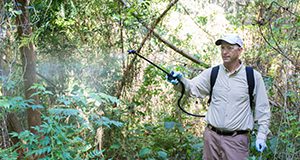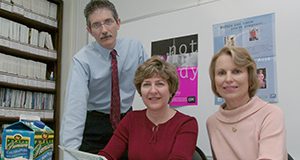Several plant species that are invasive in natural areas of public lands also occur on private property. Invasive plants on private property that thrive within both landscaped and surrounding natural areas can serve as a source of infestation to other natural areas. Therefore, property owners are encouraged to remove invasive plant species from both areas. This 5-page fact sheet is a major revision that discusses different herbicides, hand-pulling, stump grinding, foliar herbicide application, cut stump herbicide application, basal bark herbicide application, hack-and-squirt, frill, or girdle herbicide application, licenses and training, and control of specific invasive plants. Written by K. A. Langeland and S. F. Enloe, and published by the UF Department of Agronomy, revised May 2016.
http://edis.ifas.ufl.edu/ag259
Tag: major revision
Prevencion de Caidas: Estilos de vida y riesgo de caidas
Hay muchos factores que pueden contribuir a las razones por las que usted se cae, pero algunos de éstos, los puede cambiar. A continuación le ofrecemos algunos cambios sencillos que puede hacer para reducir el riesgo de caerse.
This 2-page fact sheet is a major revision of the Spanish version of FCS2230/FY736:Fall Prevention: Lifestyle Factors and Fall Risk. Written by Linda B. Bobroff, and published by the UF Department of Family, Youth and Community Sciences, revised April 2016.
http://edis.ifas.ufl.edu/fy860
Registration and Licensure of Nutrition Professionals in Florida
Consumers need to know who is qualified to practice nutrition or dietetics before seeking nutrition advice. This 3-page fact sheet is a major revision that provides information about dietetic registration and licensure. Written by Linda B. Bobroff, and published by the UF Department of Family, Youth and Community Sciences, revised June 2016.
http://edis.ifas.ufl.edu/fy690
Vida Saludable: Fuentes de informacion sobre la diabetes
Muchos recursos sobre la diabetes se encuentra en línea.
This 2-page fact sheet provides a list of resources with information on diabetes. Written by Linda B. Bobroff and Paulina Wittkowsky, and published by the UF Department of Family, Youth and Community Sciences, revised August 2015.
http://edis.ifas.ufl.edu/fy083
Fall Prevention: Home Safety Inventory
 Most falls occur in the home, so it is wise to take time to do a home safety inventory. This 2-page fact sheet is a major revision that can be used to identify problem areas in your home. Written by Linda B. Bobroff, and published by the UF Department of Family, Youth and Community Sciences, revised July 2016.
Most falls occur in the home, so it is wise to take time to do a home safety inventory. This 2-page fact sheet is a major revision that can be used to identify problem areas in your home. Written by Linda B. Bobroff, and published by the UF Department of Family, Youth and Community Sciences, revised July 2016.
http://edis.ifas.ufl.edu/fy735
Preventing Foodborne and Non-foodborne Illness: Vibrio vulnificus
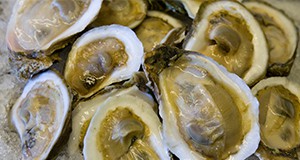 Vibrio vulnificus occurs naturally in warm brackish and saltwater environments. During the warmer months, this bacterium can reach particularly high concentrations in filter-feeding shellfish that inhabit coastal waters. Foodborne illness from V. vulnificus is almost exclusively associated with consumption of raw oysters. This 3-page fact sheet is a major revision that discusses risk of infection, times to seek medical treatment, symptoms, activities related to illness, foods commonly associated with the bacterium, handling and storage of seafood and shellfish, and methods of prevention. Written by Anita C. Wright, Renée M. Goodrich, Michael A. Hubbard, and Keith R. Schneider, and published by the UF Food Science and Human Nutrition Department. Original publication date: July 2009. Revised October 2015.
Vibrio vulnificus occurs naturally in warm brackish and saltwater environments. During the warmer months, this bacterium can reach particularly high concentrations in filter-feeding shellfish that inhabit coastal waters. Foodborne illness from V. vulnificus is almost exclusively associated with consumption of raw oysters. This 3-page fact sheet is a major revision that discusses risk of infection, times to seek medical treatment, symptoms, activities related to illness, foods commonly associated with the bacterium, handling and storage of seafood and shellfish, and methods of prevention. Written by Anita C. Wright, Renée M. Goodrich, Michael A. Hubbard, and Keith R. Schneider, and published by the UF Food Science and Human Nutrition Department. Original publication date: July 2009. Revised October 2015.
http://edis.ifas.ufl.edu/fs147
Breast Cancer: Preparing for Surgery
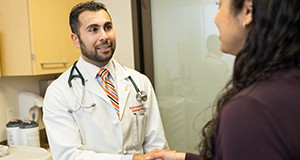 Once you and your doctor schedule your breast cancer surgery, you may have additional questions about how you can prepare for your operation. This 5-page fact sheet provides information to help you get ready for breast cancer surgery through a brief overview of common surgical options, medical appointments, social support systems, and standard surgical procedures as well as reactions and memories of women who have gone through this experience. Written by Martha C. Monroe and Barbara F. Shea, and published by the UF Department of Family, Youth and Community Sciences. Revised February 2016.
Once you and your doctor schedule your breast cancer surgery, you may have additional questions about how you can prepare for your operation. This 5-page fact sheet provides information to help you get ready for breast cancer surgery through a brief overview of common surgical options, medical appointments, social support systems, and standard surgical procedures as well as reactions and memories of women who have gone through this experience. Written by Martha C. Monroe and Barbara F. Shea, and published by the UF Department of Family, Youth and Community Sciences. Revised February 2016.
http://edis.ifas.ufl.edu/fy899
Healthy Living: Reliable Websites
 The number of resources available online grows every day. Unfortunately, there are no regulations to ensure that the information on these websites is accurate. Older adults can readily access reliable information on the Internet by focusing on government and education sites. This 2-page fact sheet is a major revision that provides a list of trustworthy Internet sources related to nutrition, health, food safety, and general interest for older adults. Written by Linda B. Bobroff and Leigh Ann Martin, and published by the UF Department of Family, Youth and Community Sciences, revised January 2016.
The number of resources available online grows every day. Unfortunately, there are no regulations to ensure that the information on these websites is accurate. Older adults can readily access reliable information on the Internet by focusing on government and education sites. This 2-page fact sheet is a major revision that provides a list of trustworthy Internet sources related to nutrition, health, food safety, and general interest for older adults. Written by Linda B. Bobroff and Leigh Ann Martin, and published by the UF Department of Family, Youth and Community Sciences, revised January 2016.
http://edis.ifas.ufl.edu/fy102
Preventing Foodborne and Non-foodborne Illness: Vibrio parahaemolyticus
 Vibrio parahaemolyticus is a naturally occurring bacterium that inhabits coastal brackish marine waters throughout the world and is commonly found in the United States and Canada. If ingested in sufficient numbers, this bacterium can cause illness such as gastroenteritis with symptoms such as cramps, vomiting, and nausea. Illnesses linked with this organism are usually associated with the consumption of raw or improperly cooked seafood, particularly raw oysters. This 3-page fact sheet is a major revision that discusses Vibrio parahaemolyticus, illness caused by the bacterium, factors that increase risk of infection, methods of infection, seafood and shellfish handling recommendations, and prevention. Written by Anita C. Wright, Renée M. Goodrich, Michael A. Hubbard, and Keith R. Schneider, and published by the UF Department of Food Science and Human Nutrition. Original publication date: July 2009. Revised October 2015.
Vibrio parahaemolyticus is a naturally occurring bacterium that inhabits coastal brackish marine waters throughout the world and is commonly found in the United States and Canada. If ingested in sufficient numbers, this bacterium can cause illness such as gastroenteritis with symptoms such as cramps, vomiting, and nausea. Illnesses linked with this organism are usually associated with the consumption of raw or improperly cooked seafood, particularly raw oysters. This 3-page fact sheet is a major revision that discusses Vibrio parahaemolyticus, illness caused by the bacterium, factors that increase risk of infection, methods of infection, seafood and shellfish handling recommendations, and prevention. Written by Anita C. Wright, Renée M. Goodrich, Michael A. Hubbard, and Keith R. Schneider, and published by the UF Department of Food Science and Human Nutrition. Original publication date: July 2009. Revised October 2015.
http://edis.ifas.ufl.edu/fs146
The Economic Impact of Feed Efficiency in Beef Cattle
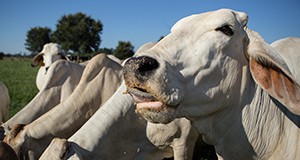 A well-run, profitable business is usually more efficient than its competitors. In the case of the beef cattle industry, competition can come from two sources: other producers who sell similar classes of cattle, and other protein-producing species, such as pork and poultry. Measuring efficiency across the entire integrated beef system can be difficult due to the differing classes of cattle, breed differences, and ways in which the biological systems interact. There are a multitude of measures of efficiency in beef production, with feed efficiency being one of the most economic. This 3-page fact sheet is a major revision that covers feed to gain ratio and residual feed intake in beef cattle. Written by Travis D. Maddock, Darren D. Henry, and G. Cliff Lamb, and published by the UF Department of Animal Sciences. Original publication date: May 2009. Revised October 2015.
A well-run, profitable business is usually more efficient than its competitors. In the case of the beef cattle industry, competition can come from two sources: other producers who sell similar classes of cattle, and other protein-producing species, such as pork and poultry. Measuring efficiency across the entire integrated beef system can be difficult due to the differing classes of cattle, breed differences, and ways in which the biological systems interact. There are a multitude of measures of efficiency in beef production, with feed efficiency being one of the most economic. This 3-page fact sheet is a major revision that covers feed to gain ratio and residual feed intake in beef cattle. Written by Travis D. Maddock, Darren D. Henry, and G. Cliff Lamb, and published by the UF Department of Animal Sciences. Original publication date: May 2009. Revised October 2015.
http://edis.ifas.ufl.edu/an217
Avian Diseases Transmissible to Humans
 Anyone who keeps birds, whether as pets or as production animals, should be aware that certain avian diseases can be transmitted to humans. The seriousness of the disease in humans varies with human hosts’ age, overall health, and immune status as well as virulence of the organism, infective dose, and route of infection. This 4-page fact sheet is a major revision which discusses causes and symptoms of avian influenza (bird flu), chlamydiosis, salmonellosis, colibacillosis, encephalitis viruses, avian tuberculosis, Newcastle Disease, and cryptosporidiosis. Written by Michael A. Davis, Gary D. Butcher, and F. Ben Mather, and published by the UF Department of Animal Sciences, revised August 2015. Original publication date: August 1997.
Anyone who keeps birds, whether as pets or as production animals, should be aware that certain avian diseases can be transmitted to humans. The seriousness of the disease in humans varies with human hosts’ age, overall health, and immune status as well as virulence of the organism, infective dose, and route of infection. This 4-page fact sheet is a major revision which discusses causes and symptoms of avian influenza (bird flu), chlamydiosis, salmonellosis, colibacillosis, encephalitis viruses, avian tuberculosis, Newcastle Disease, and cryptosporidiosis. Written by Michael A. Davis, Gary D. Butcher, and F. Ben Mather, and published by the UF Department of Animal Sciences, revised August 2015. Original publication date: August 1997.
http://edis.ifas.ufl.edu/ps019
